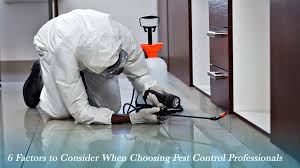Fleas are tiny pests that can cause big problems for homeowners and pet owners alike. These minuscule insects, though seemingly insignificant, can wreak havoc on your home, health, and pets if not managed effectively. This guide will provide an in-depth exploration of flea control, from understanding their lifecycle to practical solutions for their eradication.
Understanding Fleas: The Enemy at Hand
Fleas are small, wingless insects that feed on the blood of mammals and birds. Their flattened bodies and powerful legs make them adept at moving through fur and feathers and leaping onto unsuspecting hosts. Fleas are not just an itchy inconvenience—they can transmit diseases and cause allergic reactions in both humans and animals.
Flea Lifecycle
To effectively manage fleas, it’s essential to understand their lifecycle. Fleas have four stages of development:
-
Egg: Adult fleas lay eggs on their hosts, but these eggs often fall into the environment.
-
Larva: Larvae hatch from eggs and feed on organic debris, such as flea feces.
-
Pupa: Larvae spin cocoons and enter the pupal stage, which is highly resistant to environmental conditions.
-
Adult: Adult fleas emerge from cocoons when conditions are favorable, such as the presence of a nearby host.
By understanding these stages, you can target interventions more effectively.
Identifying a Flea Infestation
Recognizing the signs of a flea infestation early can save you a lot of trouble. Common signs include:
-
Pets scratching excessively: Fleas are irritating, and infested pets often scratch or bite at their skin.
-
Flea dirt: These small black specks, often found in pet bedding or fur, are flea feces.
-
Bites on humans: Flea bites typically appear as small, red, itchy bumps, often around the ankles.
-
Visible fleas: Adult fleas can sometimes be seen jumping on pets or furniture.
Prevention: The Best Cure
Preventing a flea infestation is always easier than dealing with an established one. Here are some effective prevention strategies:
Pet Care
-
Regular grooming: Brush and bathe your pets frequently.
-
Topical treatments: Use vet-approved flea preventatives.
-
Flea collars: These can provide long-term protection for your pets.
Home Maintenance
-
Vacuum regularly: Pay special attention to carpets, rugs, and upholstery.
-
Wash bedding: Clean your pet’s bedding and any other washable fabrics.
-
Seal cracks: Fleas can hide in floorboards and baseboards.
Outdoor Spaces
-
Yard maintenance: Keep grass short and remove debris where fleas can thrive.
-
Restrict wildlife: Limit the presence of stray animals that could bring fleas onto your property.
Eradicating Fleas: Step-by-Step
Despite your best efforts, fleas might still find their way into your home. Here’s a step-by-step guide to eliminating them:
Step 1: Treat Your Pets
Start by addressing the primary hosts of fleas—your pets. Use veterinarian-recommended flea treatments such as shampoos, sprays, or oral medications. Be sure to follow dosage instructions carefully.
Step 2: Clean Your Home Thoroughly
-
Vacuuming: Use a vacuum with a HEPA filter to remove eggs, larvae, and adult fleas. Dispose of the vacuum bag immediately.
-
Steam cleaning: Hot steam can kill fleas in carpets and upholstery.
-
Laundering: Wash all bedding, rugs, and curtains in hot water.
Step 3: Use Flea Treatments
-
Insecticides: Use sprays or foggers designed for flea control, paying attention to areas where fleas are likely to hide.
-
Diatomaceous earth: This natural powder can be sprinkled in cracks and crevices to kill fleas by dehydrating them.
-
Growth regulators: Products containing insect growth regulators (IGRs) can prevent flea eggs and larvae from developing into adults.
Step 4: Repeat as Necessary
Flea eradication often requires multiple treatments due to their lifecycle. Be persistent and follow up with preventive measures to avoid re-infestation.
Natural Remedies for Flea Management
If you prefer eco-friendly methods, several natural remedies can help control fleas:
-
Essential oils: Oils like lavender, eucalyptus, and cedarwood can repel fleas. Use them in a diffuser or diluted sprays.
-
Herbal sachets: Place sachets of dried herbs like rosemary and mint in areas where fleas are common.
-
Vinegar solutions: Mix vinegar with water to create a spray for pets and surfaces.
-
Salt or baking soda: Sprinkle these on carpets to dehydrate fleas and vacuum after a few hours.
While natural methods can be effective, they may not provide the same level of control as chemical treatments.
Flea Management for Multi-Pet Households
In homes with multiple pets, flea control requires extra effort. Treat all pets simultaneously to avoid cross-infestation. Ensure that each pet receives the appropriate treatment for its size and species. Also, consider designating specific areas for each pet to limit flea spread.
The Importance of Professional Help
Sometimes, DIY methods are not enough to handle severe infestations. In such cases, enlisting professional flea control services can be invaluable. Experts have the tools, knowledge, and experience to address infestations comprehensively and prevent recurrence.
Final Thoughts
Managing fleas requires a combination of vigilance, prevention, and targeted action. By understanding their lifecycle, recognizing the signs of infestation, and employing both natural and chemical methods, you can keep your home and pets flea-free. Remember, consistency and thoroughness are key—every missed flea is a potential new infestation. Take proactive steps today to ensure a healthier, happier environment for both you and your furry friends.
